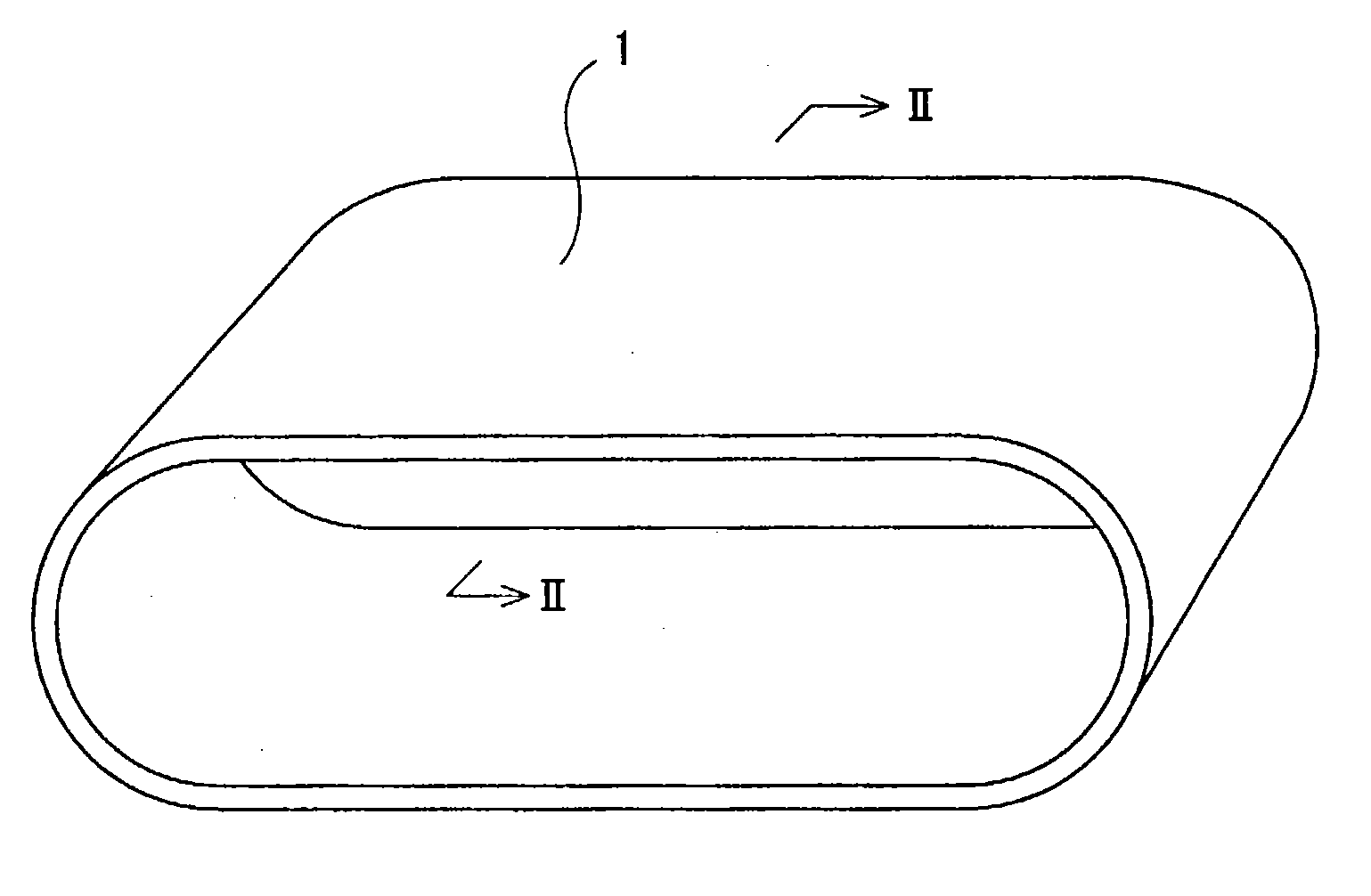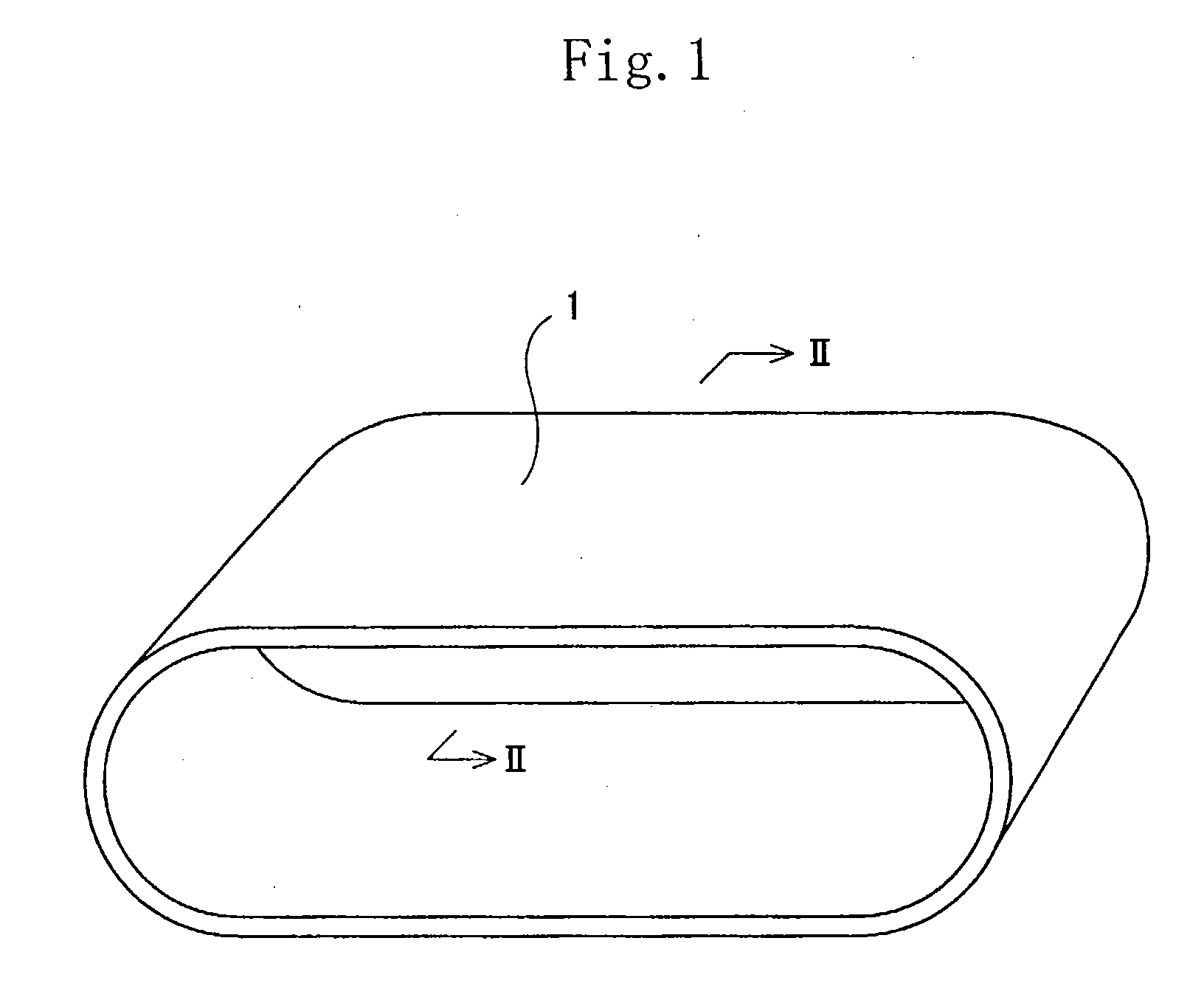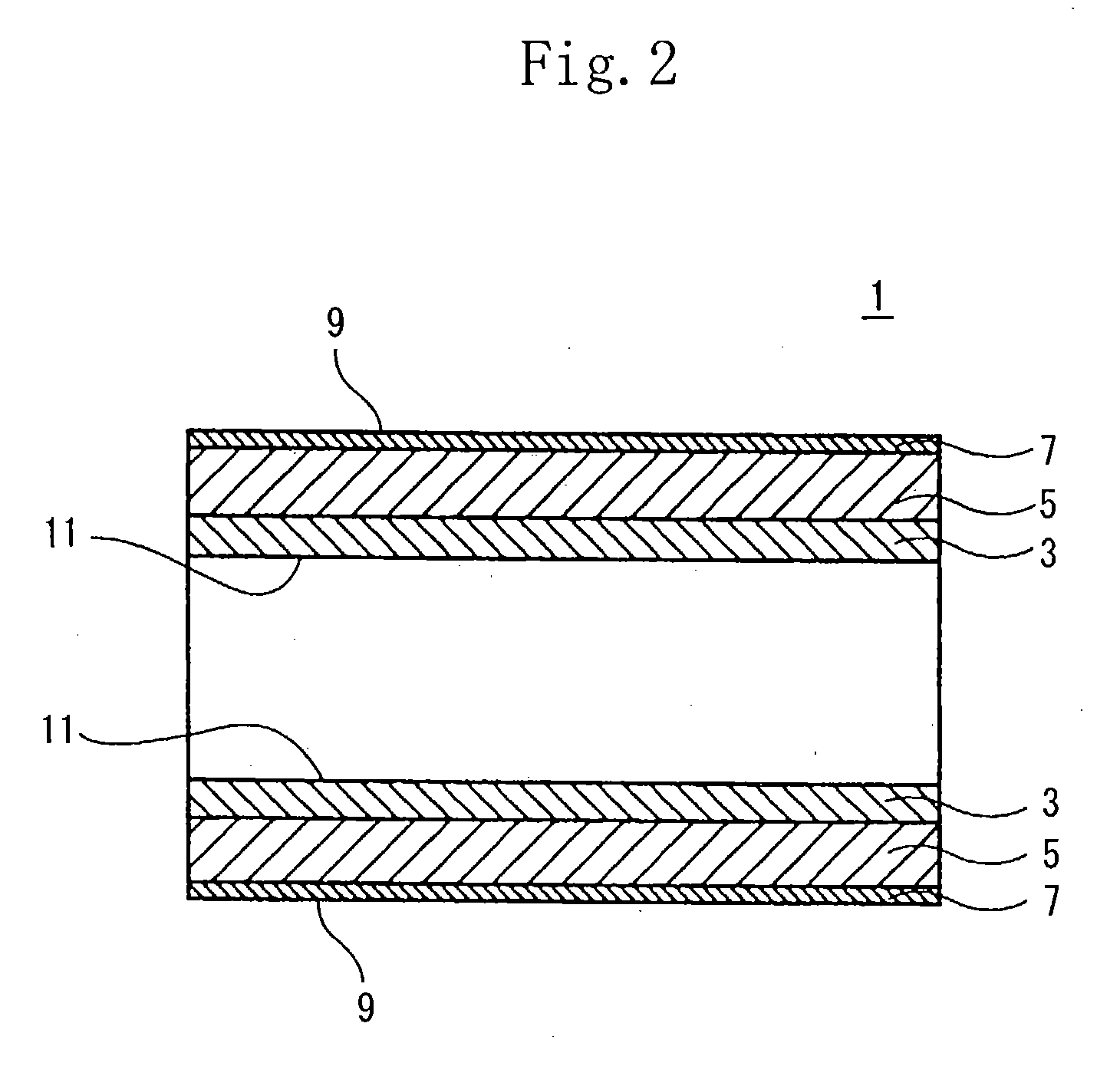Conductive belt
a technology of conductive filler and conductive rubber, which is applied in the field of conductive belts, can solve the problems of difficult to allow the above-described resin having a high elastic modulus to be ionic-conductive, and the electric resistance varies in dependence on a portion,
- Summary
- Abstract
- Description
- Claims
- Application Information
AI Technical Summary
Benefits of technology
Problems solved by technology
Method used
Image
Examples
Embodiment Construction
coating layer layer Base layer Material Coating 1 Intermediate Base layer 1 layer 1 Molding method Electrostatic Centrifugal Centrifugal deposition molding molding Thickness (.mu.) 5 300 300 Tensile modulus -- -- 640 of elasticity (Mpa) Hardness (JIS A) -- 52 --Volume 4.6 .times. 10.sup.13 2.0 .times. 10.sup.12 3.2 .times. 10.sup.8 resistivity (.OMEGA. .multidot. cm) [500 V] Ionic- Ionic- Ionic- Electro-conductive / conductive conductive conductive electro-conductive Surface Intermediate Example 2 coating layer layer Base layer Material Coating 1 Intermediate Base layer 2 layer 2 Molding method Electrostatic Bar coat Centrifugal deposition molding Thickness (.mu.) 5 500 82 Tensile modulus -- --7300 of elasticity (Mpa) Hardness (JIS A) -- 60 --Volume 4.6 .times. 10.sup.13 9.7 .times. 10.sup.12 8.8 .times. 10.sup.8 resistivity (.OMEGA. .multidot. cm) [500 V] Ionic- Ionic- Ionic- Electro-conductive / conductive conductive conductive electro-conductive Comparison Surface Intermediate Exam...
PUM
| Property | Measurement | Unit |
|---|---|---|
| thickness | aaaaa | aaaaa |
| thickness | aaaaa | aaaaa |
| thickness | aaaaa | aaaaa |
Abstract
Description
Claims
Application Information
 Login to View More
Login to View More - R&D
- Intellectual Property
- Life Sciences
- Materials
- Tech Scout
- Unparalleled Data Quality
- Higher Quality Content
- 60% Fewer Hallucinations
Browse by: Latest US Patents, China's latest patents, Technical Efficacy Thesaurus, Application Domain, Technology Topic, Popular Technical Reports.
© 2025 PatSnap. All rights reserved.Legal|Privacy policy|Modern Slavery Act Transparency Statement|Sitemap|About US| Contact US: help@patsnap.com



